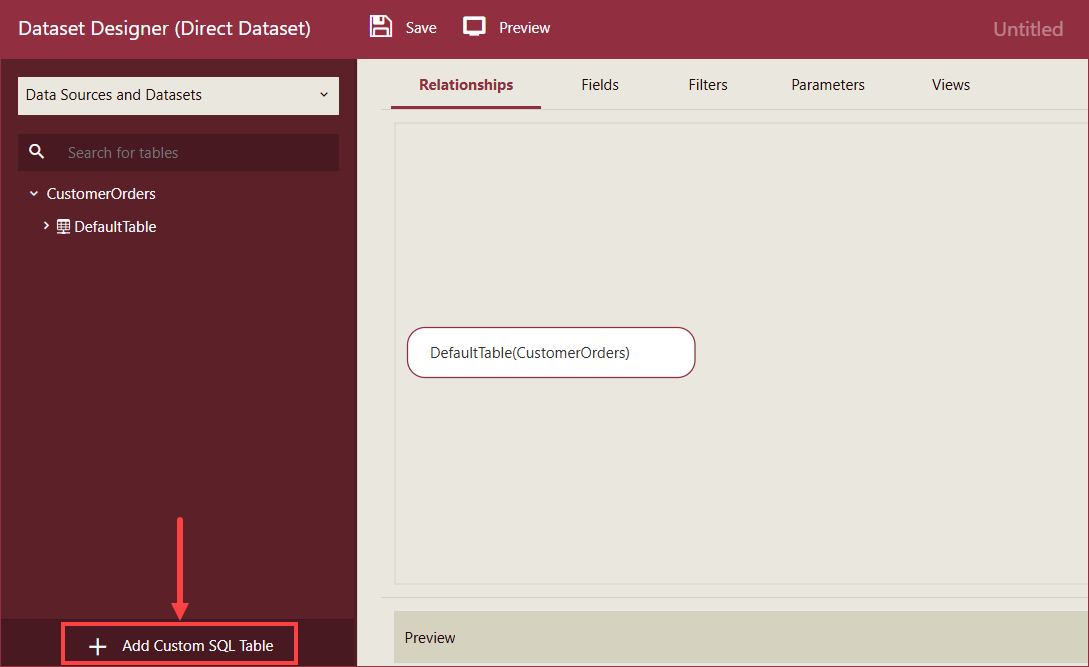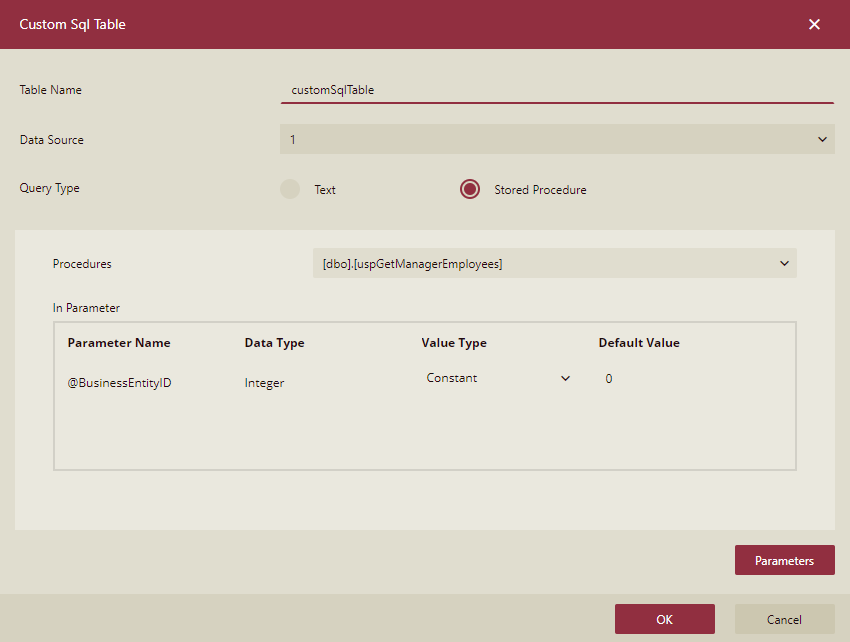- Getting Started
- Administration Guide
-
User Guide
- An Introduction to Wyn Enterprise
- Document Portal for End Users
- Data Governance and Modeling
- Working with Resources
- Working with Reports
- Working with Dashboards
- View and Manage Documents
- Understanding Wyn Analytical Expressions
- Section 508 Compliance
- Subscribe to RSS Feed for Wyn Builds Site
- Developer Guide
Add a Custom Table
By adding a custom table, you can manually fill in an SQL query statement to generate a custom table. The custom table editor allows you to directly fill in the name of a stored procedure defined on the data source to call it. Note that the custom table option does not support cross-source operations, so you can only create custom tables based on a single data source.
In the lower left corner of the Dataset Designer, click +Add Custom SQL Table.

In the Custom SQL Table dialog, enter the name of the newly added custom table, select the required data source, and select the query type as Text, then enter the SQL query command, and click OK.
To use a stored procedure, in the Custom SQL Table dialog, select a data source, and select the query type as Stored Procedure.
Select a stored procedure from the list and click OK.

View the custom table under Custom Tables in the Data Sources area of the Dataset Designer.



